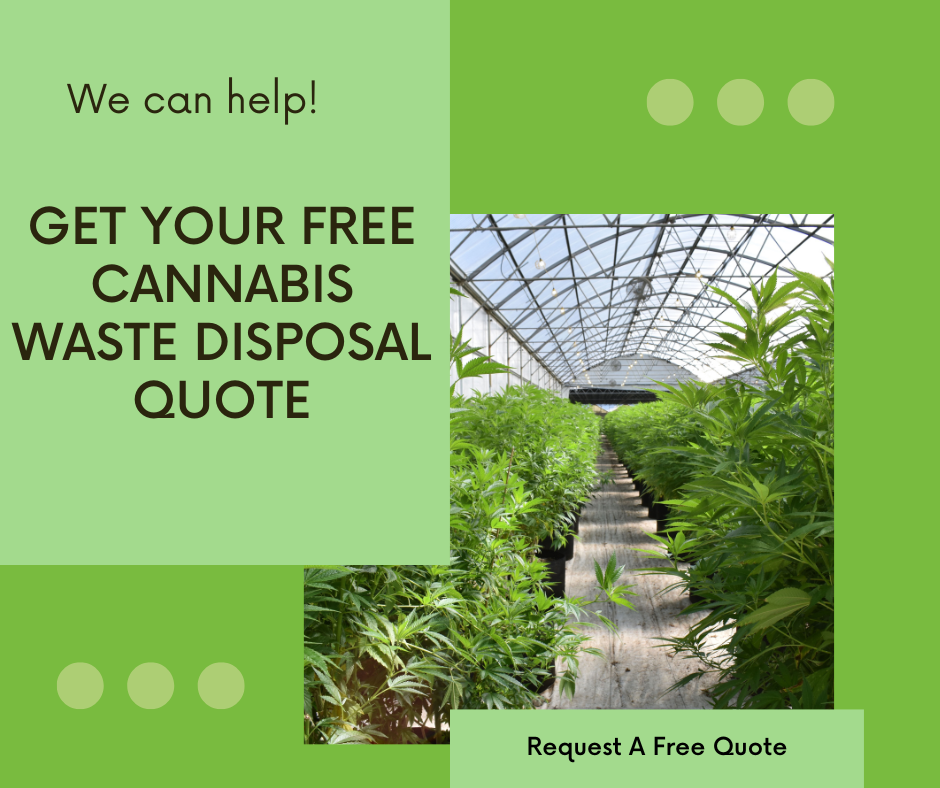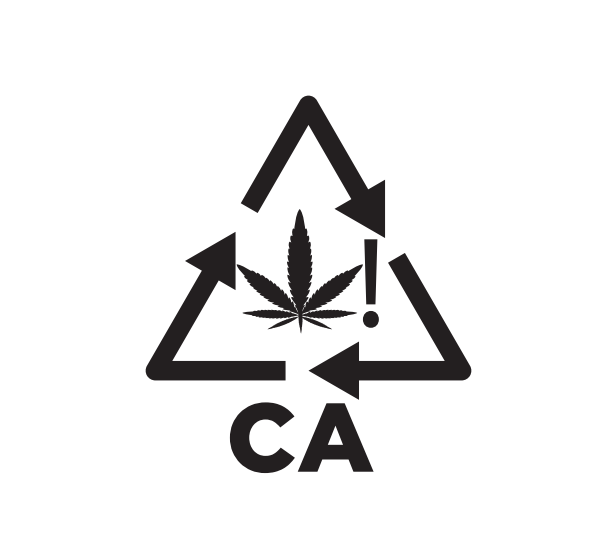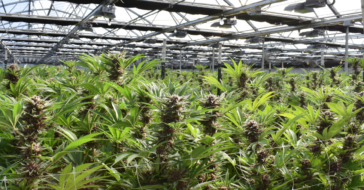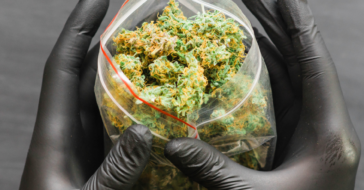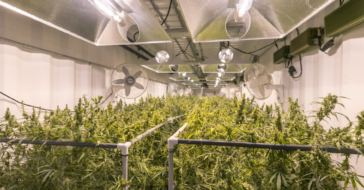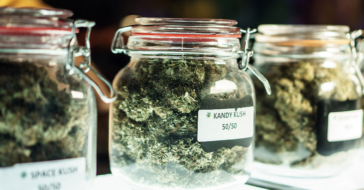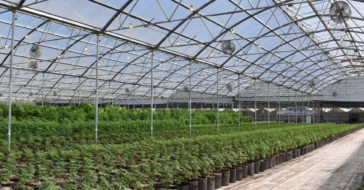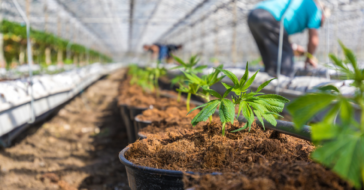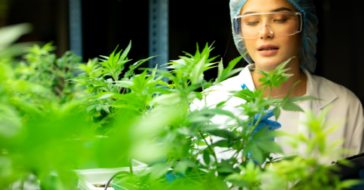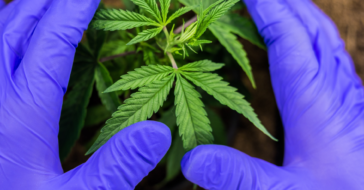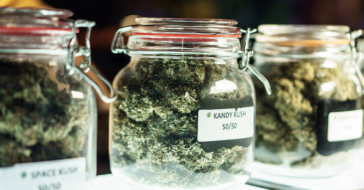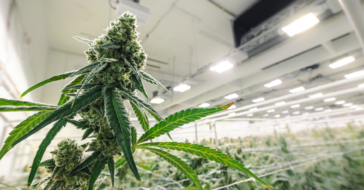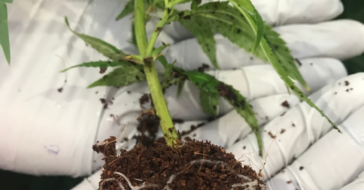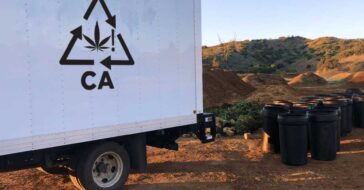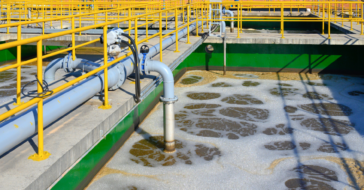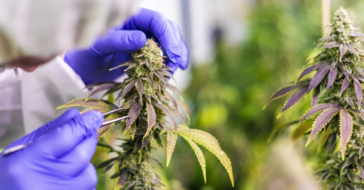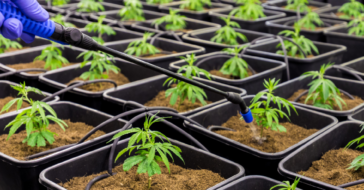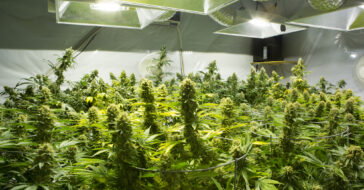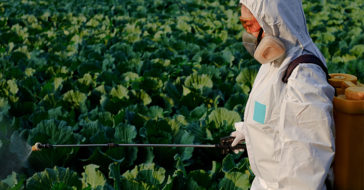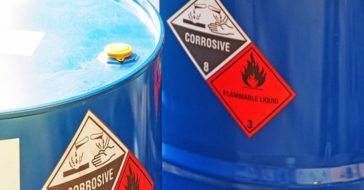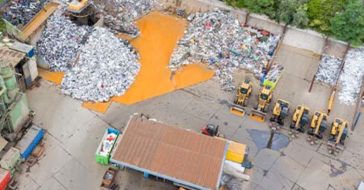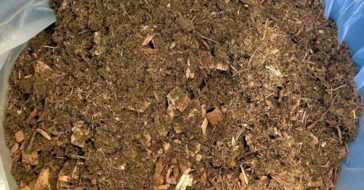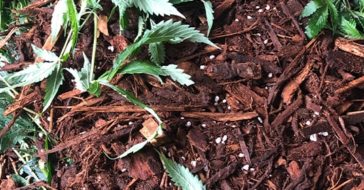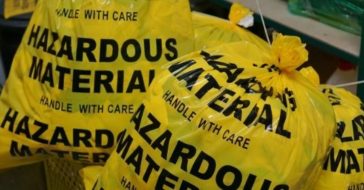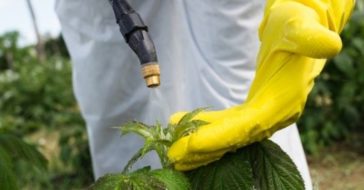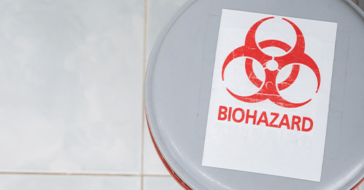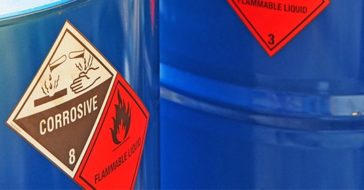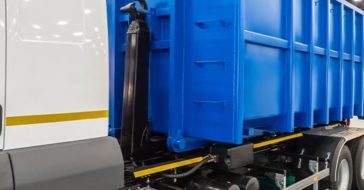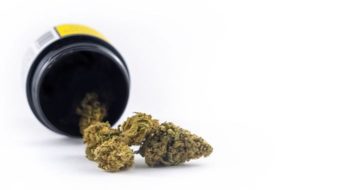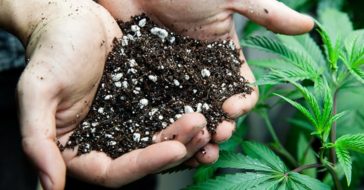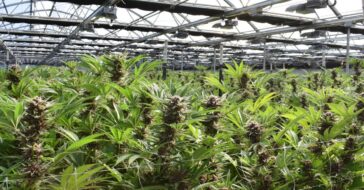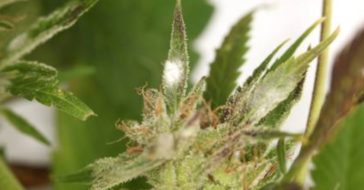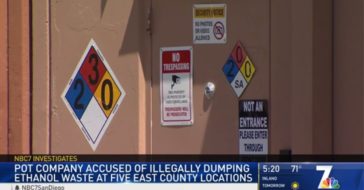While it’s easy to get tunnel vision on properly disposing of your cannabis waste, how you store it on-site as it awaits disposal is just as important to maintaining compliance.
Proper cannabis waste storage involves:
- Categorizing your waste correctly
- Packaging and labeling your waste using the correct materials
- Securing your cannabis waste
- Keeping accurate records
- Training your employees about proper storage procedures
If your business generates any type of cannabis waste, it’s essential to follow strict protocols for proper storage and handling.
Categorizing Your Waste Correctly
While storing cannabis waste onsite, it’s important to separate or segregate different types of waste for several reasons, from regulatory compliance to environmental protection and efficient waste management.
Whether you’re a cannabis nursery, distributor, dispensary, manufacturer, cultivator or other type of cannabis company, you produce waste (and likely more than one type).
For example, organic waste includes plant trimmings, unusable plant material and other organic byproducts of cannabis cultivation or processing.
Organic waste can often be composted or otherwise processed to create beneficial soil amendments. By separating organic waste, you prevent contamination of other waste types and contribute to sustainable waste management practices.
Non-organic waste refers to materials like packaging, plastic containers, labels and other non-biodegradable components associated with cannabis products. Separating this type of waste prevents it from being mixed with organic waste, which can hinder composting or other environmentally-friendly disposal methods. Segregating non-organic waste can also facilitate recycling efforts.
While hazardous waste is often thought of as chemicals, solvents, pesticides and other materials that pose a potential threat to human health, it’s important to know that despite the legalization of cannabis in California, cannabis remains a Schedule 1 Federally Controlled Substance. This makes the disposal of any type of cannabis waste potentially hazardous or complex.
You may also have other types of waste in your facility or on your property, from contaminated soil to lab waste or electronic waste.
Proper separation of this waste is critical to prevent contamination of other waste streams, as well as to ensure the safety of personnel and the environment. Particularly hazardous waste has specific handling, storage and disposal requirements to minimize these risks.
When waste is properly categorized and segregated, you can better streamline your waste management process as well. Waste disposal facilities can process and dispose of specific waste types more effectively, minimizing the environmental impact and saving you costs so that you aren’t paying for hazardous waste disposal when you don’t need it.
Separating recyclable materials from organic waste and hazardous waste makes it easier to recycle non-organic components. This contributes to reducing waste sent to landfills and conserving valuable resources.
Packaging And Labeling Your Waste
When storing your cannabis waste, it’s important to use designated waste containers. The best cannabis waste disposal companies will provide you with UN-rated containers, which are air-tight and offer maximum odor protection.

UN-rated containers have been tested and certified to meet specific international standards set by the United Nations for the safe transportation of hazardous materials. These containers are designed to ensure the proper containment and transport of substances that pose a risk to human health, safety and the environment.
Particularly with cannabis waste, odor is an issue. Cannabis plants contain a variety of aromatic compounds, including terpenes, which are responsible for the distinctive scents associated with different strains of cannabis.
When cannabis waste is generated and stored, these compounds can become more concentrated and release strong odors, which may be problematic for neighboring communities, security (potential theft) and unwanted attention from pests and wildlife. Odors can also trigger a regulatory response and subject your business to violations and fines.
Be sure to use biodegradable lining in your containers as well. This further helps ensure proper hygiene and prevent spillage.
Each container should be properly labeled as well. Labels should include information such as the type of waste, if it is hazardous (pictograms and hazard class), important physical or chemical properties, date of generation, handling instructions and emergency contact information.
Securing Your Cannabis Waste
Securing cannabis waste containers is essential to prevent unauthorized access, theft and potential safety hazards. Proper security measures help maintain compliance with regulations and ensure that the waste is managed responsibly. Here are some guidelines for securing cannabis waste containers:
- Locked Storage Area: Store cannabis waste containers in a designated, locked storage area that is accessible only to authorized personnel. This prevents unauthorized individuals from gaining access to the waste.
- Restricted Access: Limit access to the storage area to employees who have been trained in proper waste handling procedures. Use keycards, locks or other access control mechanisms to ensure only authorized personnel can enter.
- Surveillance: Install security cameras in the storage area to monitor activity and deter unauthorized access. Video surveillance can help identify any incidents or breaches.
- Fencing and Barriers: If the waste storage area is outdoors, consider installing fencing or barriers to further prevent unauthorized entry. Ensure the fencing is secure and not easily bypassed.
- Proper Lighting: Adequate lighting around the storage area can discourage unauthorized access, enhance security and aid in surveillance.
- Security Personnel: Depending on the size and location of the facility, consider employing security personnel to monitor and control access to the waste storage area.
- Alarm Systems: Install intrusion detection alarms that trigger alerts if someone attempts to access the storage area without authorization.
- Regular Audits: Conduct regular audits of waste storage areas to ensure that containers are properly secured and that security measures are in place and functioning effectively.
- Documentation: Maintain records of who has access to the storage area and when they accessed it. This documentation can be useful for security and compliance purposes.
- Employee Training: Train employees on the importance of securing cannabis waste containers and the specific security procedures in place. Emphasize the role they play in maintaining security.
- Chain of Custody: Establish a clear chain of custody for the waste, documenting every step from generation to final disposal. This helps track the waste and identify any discrepancies.
By implementing these security measures, businesses can significantly reduce the risk of unauthorized access, theft and other security-related issues with their cannabis waste containers.
Keeping Accurate Records
Maintaining accurate records when storing cannabis waste on-site is crucial for regulatory compliance, accountability and transparency. These records help demonstrate that your business is responsibly managing its waste and can be essential in case of audits or inquiries.
In fact, Cannabis Track and Trace reporting requirements track the movement of cannabis and cannabis products through the supply chain, including when waste is stored on your property. When applying to become an annual licensee under the CCTT, you must develop a cannabis waste management plan that includes the methods you will use for storing and handling cannabis waste that is generated.
through the supply chain, including when waste is stored on your property. When applying to become an annual licensee under the CCTT, you must develop a cannabis waste management plan that includes the methods you will use for storing and handling cannabis waste that is generated.
Other examples of record-keeping practices for your stored cannabis waste may include:
- Waste Inventory Log: Keep a detailed inventory log that lists the types of cannabis waste generated, the quantities and the dates of generation. This log should be regularly updated as new waste is generated.
- Categorization Records: Document the categorization of each type of waste, including whether it’s organic, non-organic or hazardous waste. This helps ensure proper handling and disposal.
- Container Tracking: Record information about each waste container, including its identification number, contents, date filled and any relevant labeling or markings.
- Access and Security Logs: Maintain logs that track who accessed the waste storage area, when they accessed it and the purpose of their access. This helps ensure that only authorized personnel are entering the area.
- Employee Training Records: Employee training is another important component of the CCTT, which we’ll detail more below in the next section. Document employee training related to cannabis waste handling, security procedures and regulatory compliance.
- Disposal Documentation: Keep records of when and how waste is disposed of. This can include receipts from waste disposal services, disposal manifests and any required reporting.
- Emergency Response Plan: Maintain a copy of the facility’s emergency response plan in the event of accidents or incidents related to waste storage.
- Communication with Cannabis Waste Disposal Companies: Maintain records of communications with waste disposal services, including agreements, contracts and documentation of waste pickups.
- Incident Reports: If there are any incidents, leaks, spills or security breaches related to cannabis waste, document these incidents and the actions taken to address them.
- Audits and Inspections: Keep records of any internal or external audits, inspections or evaluations related to waste management practices.
- Date of Transfer to Disposal: Record the date when waste is transferred from the storage area to the disposal service.
Maintaining these records not only demonstrates your commitment to responsible waste management but also provides valuable documentation in case of regulatory reviews or other inquiries require your attention.
Training Your Employees
Finally, proper cannabis waste storage should always include training for your employees. Employee training is a critical component of responsible cannabis waste management, especially when it comes to storage on-site.
Proper training ensures that workers understand the importance of compliance, safety and environmental considerations. While any specific training required may vary based on your location and local regulations, here are some key topics that should be covered:
- Regulatory Compliance: Overview of relevant local, state and federal regulations pertaining to cannabis waste storage
- Waste Categorization and Segregation: Training on how to properly categorize cannabis waste into organic, non-organic and hazardous types
- Proper Labeling and Packaging: Explanation of how to correctly label waste containers with UN numbers (if applicable), proper shipping names, hazard pictograms, etc.
- Security and Access Control: Understanding the importance of securing the waste storage area to prevent unauthorized access and theft
- Safety Procedures: Guidance on handling waste safely, including precautions to avoid spills, leaks and personal exposure, as well as training on using personal protective equipment (PPE) when necessary
- Emergency Response: Overview of the facility’s emergency response plan in case of accidents, leaks or incidents involving cannabis waste
- Waste Handling Protocols: Step-by-step instructions on how to transfer waste from production areas to the storage area safely and efficiently.
- Record Keeping: Explanation of the importance of accurate record keeping, including how to complete waste inventory logs and other relevant documentation.
- Communication: Training on effective communication regarding waste management practices among employees, including reporting incidents or issues.
- Audits and Inspections: Information on how audits and inspections are conducted and the role employees play in ensuring compliance during these processes.
- Continuing Education: Emphasis on the need for ongoing training and staying up-to-date with changes in regulations and best practices.
Training should be conducted regularly for both new and existing employees. It’s important to provide clear and comprehensive information, hands-on demonstrations and opportunities for employees to ask questions.
By investing in proper training, you can minimize risks, ensure compliance and create a culture of responsible cannabis waste storage and management within your organization.

